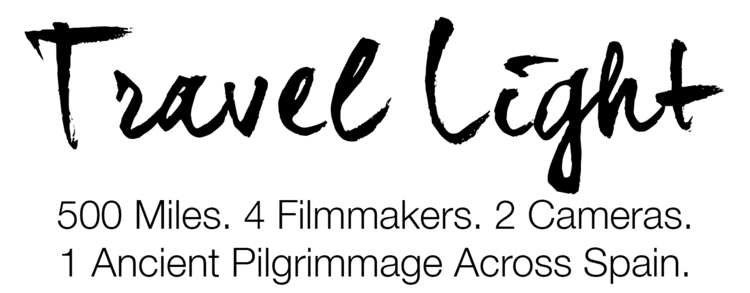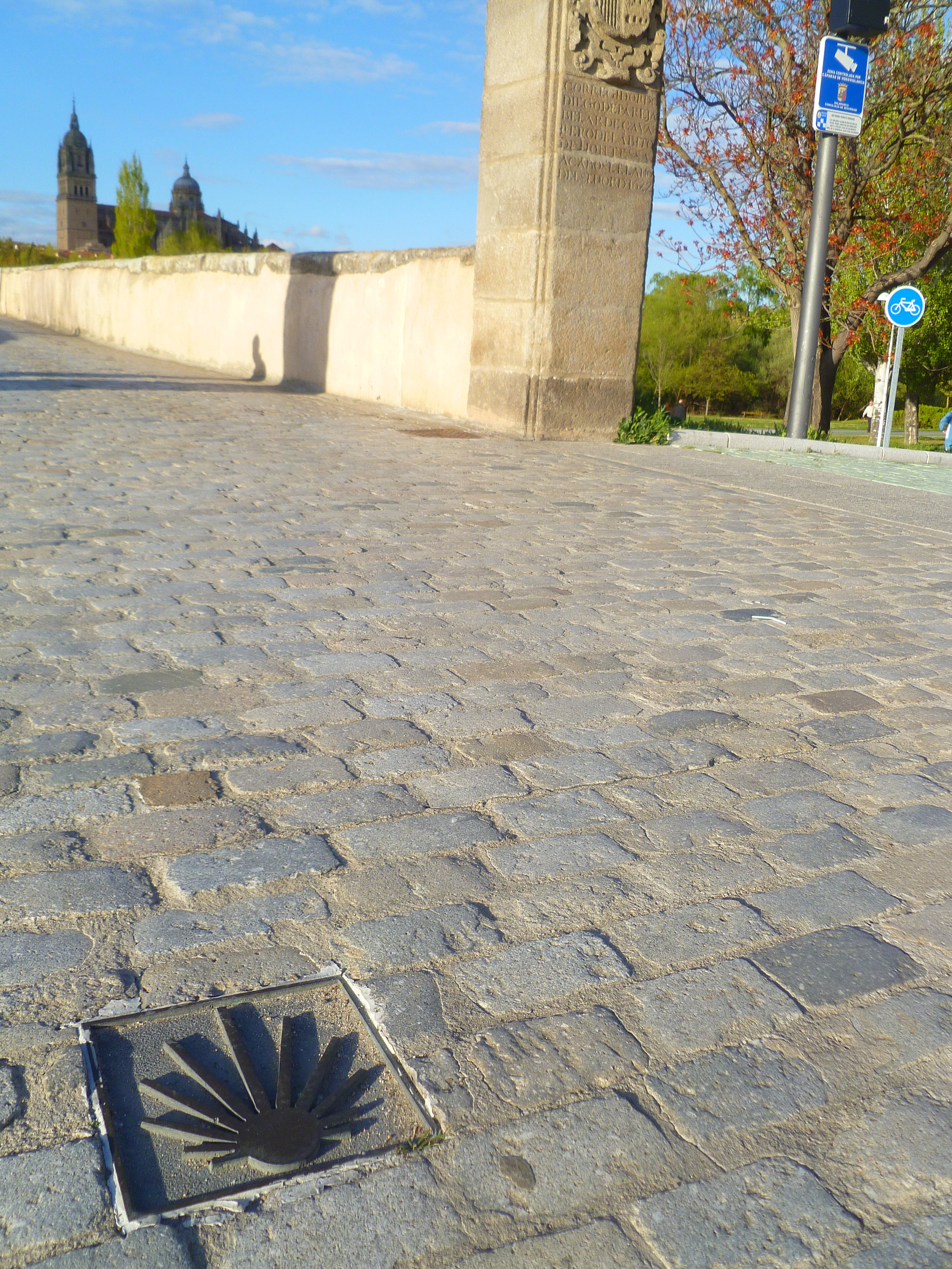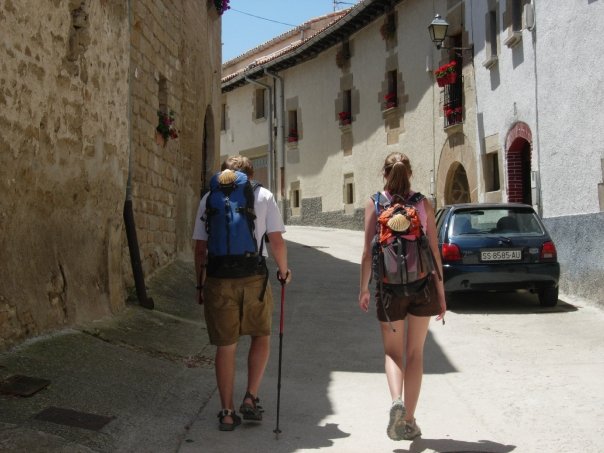Hey guys! Lindsay Thompson from the Travel Light team here. It’s been a while since we’ve blogged, and we know, we should feel guilty about it. There’s been a lot happening for our team… Lauren Martinez graduated from Wake Forest University, Gabriela Quiroz graduated from UNC School of the Arts (and left right away for an internship at the Cannes Film Festival), Ron is working on a SyFy movie out in Montana, and Emily is working on her second degree with Georgia State. My sixth graders had their documentaries premiere at the HanesBrands Theater in Winston-Salem (that’s a couple of them looking dapper in the photo), and, well, I’ve been trying to get this movie made.
But never fear. There will be a flood of information and blogging from the whole Travel Light. team from this point on… and we have someone new for you to meet.
Christina Hospodar is a student from Wake Forest University who has graciously agreed to let us follow her for part of her Camino experience. She’s a passionate traveler who we’ve loved getting to know. Here is an introduction to her, and her Camino journey, in her own words:
With May coming to a close and June just around the corner, I, like most college students, have answered my fair share of the ever-popular “What are you doing this summer?” This year, I find it difficult to answer, and not for lack of a plan, but rather lack of a brief enough response. I normally resort to “hiking in Spain” with a quick (and bad) explanation of the Camino, but I am always left unsatisfied, knowing that I have failed to convey the true spirit of the Camino or what completing it means to me, why exactly I want to do it or what I am hoping to accomplish. So let’s talk about that.
After getting back to school from Christmas break, I was thrown into the whirlwind of figuring out summer plans, surrounded by peers clamoring to secure summer internships. I knew that in a perfect world, my summer would take me back to Spain, the country that I grew to truly love after studying abroad in Salamanca. Those four months were some of the best of my life, but when I look back, what I miss most are not the luxurious stays in four-star hotels on our school-organized excursions, or the vivacious nightlife, or even the abundance of goat cheese. As silly as it may sound, I miss walking. I miss being enveloped in another culture with strands of various conversations blowing past my ears, surrounded by people with stories so different from mine. I miss having hours of time each day devoted to just getting me one place to another. I miss dwelling in my own thoughts to make those hours seem like minutes. And when I think about those things that I miss, the Camino makes sense.
That’s not to say that I am doing the Camino just to walk. If that was the case, I could spend all day on the treadmill in my basement. To me, the Camino is a concentrated version of what I miss at the very core of it – being independent and making each day a journey, both physically and personally. It means being disconnected from the world as I normally know it, with no smartphone to routinely thumb through even though nothing has changed since I last checked it half an hour ago. It means being surrounded by people I don’t know with stories that I will never know unless I make the effort. It means LOTS of alone time, despite never being truly alone.
I knew about the Camino because my friend Kyle completed a route of it after our Salamanca program ended, and when I started to think about what I wanted to do this summer, my Google searches quickly learned to fill in the “c” with search results of the Camino de Santiago. Once I started reading more about the Camino and learning about its impact on the pilgrims who walk it, it was difficult to get out of my head. I started seeing connections everywhere I went, one of the strongest being in my health psychology class. When we began discussing mindfulness, I was struck by how the elements of mindfulness, long practiced in Buddhist meditation, seemed to match perfectly with the Camino. Mindfulness is hard to define, but it is essentially a deliberate intention to nonjudgmentally pay attention to momentary experience by self-employing a distinct mode of consciousness , all while maintaining an attitude of openness, kindness and patience. Quite the mouthful, right? Basically, mindfulness means developing and engaging a distinct way of thinking where you pay attention to how you are feeling and the experiences you are presently having in order to become more in tune with your emotions, your body, and the world around you. When I first started delving into my Google searches, one of the aspects of the Camino that intrigued me the most was how despite its being a 500-mile physically demanding trek, those who completed it rarely focused on, if even mentioned at all, the physical exhaustion of it. It was somewhat odd to see such a physically demanding journey categorized so frequently as a way to “recharge your batteries,” but as I began learning more about the health benefits of mindfulness, it made complete sense.
Throughout my research, I was also struck by one element of the history of the Camino – the fact that when it first emerged in the 9th century, it was often offered as an alternative to serving a jail sentence. Today, however, being able to walk the Camino is a privilege, only accessible to those who can afford to leave behind their regular lives for over a month. To me, this seems to be a glaring reflection of how our values have changed in society, and not necessarily in a good way. Has our world become so engulfed by materialism and consumerism that such a bare-bones journey, a journey that was once equivalent to prison, has become a luxury? If so, what can the Camino teach us? What can we extrapolate from the privilege of walking the Camino that we could incorporate into our daily lives? After considering these questions and the application of mindfulness, I knew that I needed to personally experience the Camino in order to answer them. I applied for a Richter travel grant to study the Camino in relation to mindfulness, and was beyond thrilled to receive a congratulatory e-mail a month later. I know the Camino has something to teach us. There is a reason people go back year after year, a reason that the physical exhaustion of it plays an almost minor role. I’m hoping to find that reason.
I never knew the Camino existed until Kyle told me about his plans of doing it. I remember that conversation, and I remember it sounding crazy to me. “You’re doing it alone? Is that even safe? So it’s not with a tour group at all?” Now I’m answering the same bewildered questions.
And I’ve never been more excited.







